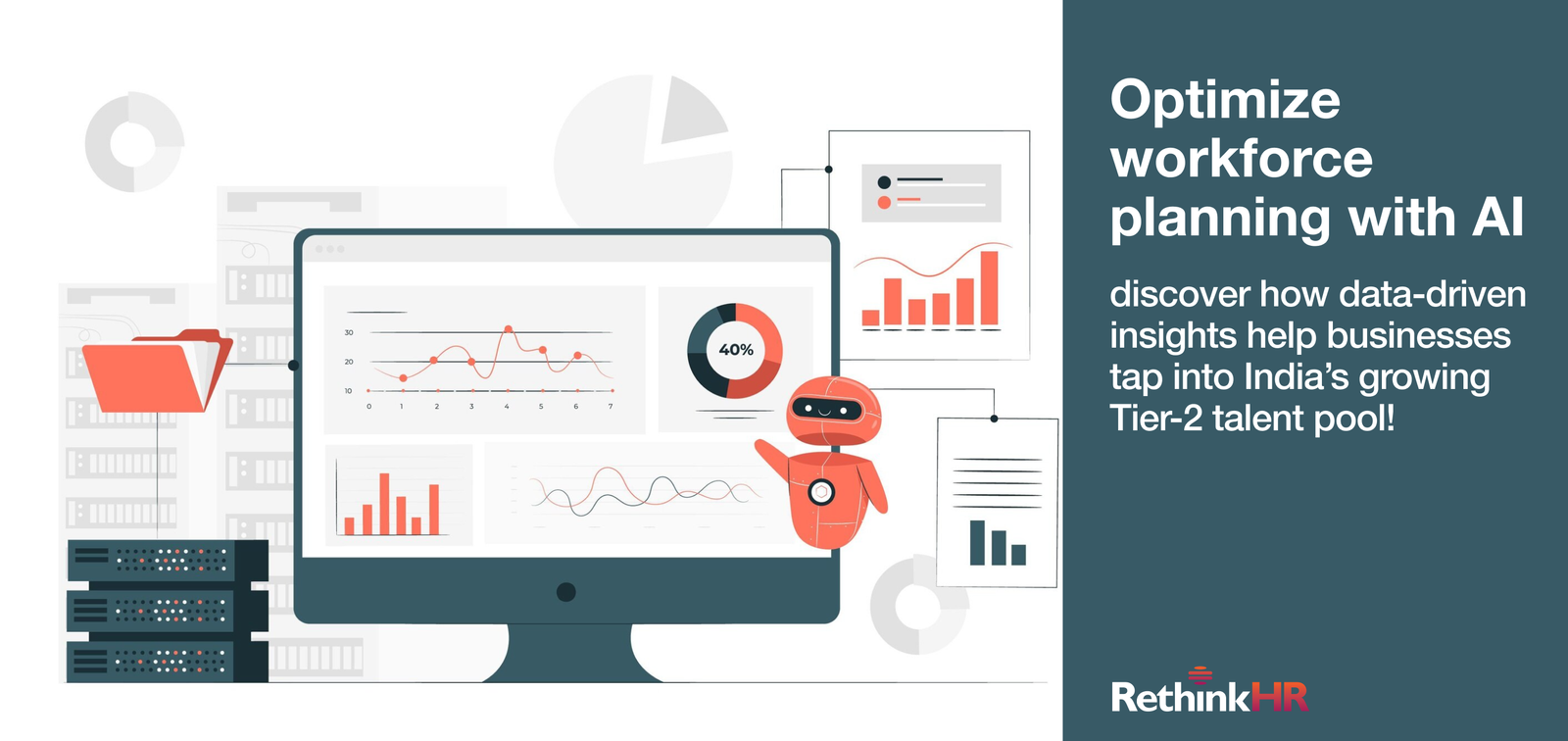As India experiences a significant shift in its job market, AI-Powered Workforce Planning is emerging as a critical strategy for organizations looking to harness the potential of Tier-2 cities. With the increasing demand for specialized skills, particularly in artificial intelligence (AI) and data science, companies must adapt their workforce planning strategies to tap into this burgeoning talent pool. This blog explores the current landscape of workforce planning in India, the role of AI, and how organizations can effectively engage with Tier-2 talent.
The Talent Boom in Tier-2 Cities and AI-Powered Workforce Planning
India’s Tier-2 cities are witnessing a remarkable transformation in their job markets. According to recent reports, there has been an impressive 48% increase in IT hiring within these cities during the third quarter of 2024. This trend indicates a geographical diversification of job opportunities, moving beyond traditional tech hubs like Bangalore and Hyderabad to cities such as Jaipur, Agra, and Jodhpur.
Key Drivers of Talent Growth in AI-Powered Workforce Planning
- Economic Diversification: As businesses expand their operations to Tier-2 cities, they create new job opportunities that attract local talent.
- Government Initiatives: The Indian government is actively promoting skill development programs aimed at enhancing employability in these regions.
- Cost Efficiency: Companies find it more cost-effective to operate in Tier-2 cities due to lower living costs and operational expenses.
The Role of AI in AI-Powered Workforce Planning
AI technologies are revolutionizing workforce planning by providing data-driven insights that help organizations make informed decisions about talent acquisition and management. Here’s how AI can enhance workforce planning:
1. Predictive Analytics in AI-Powered Workforce Planning – AI-powered tools can analyze historical hiring data and market trends to predict future talent needs. This allows organizations to proactively identify skill gaps and adjust their recruitment strategies accordingly.
2. Enhanced Recruitment Processes through AI-Powered Workforce Planning – AI can streamline recruitment by automating resume screening and candidate assessments. By utilizing machine learning algorithms, companies can identify candidates with the right skills and cultural fit more efficiently.
3. Upskilling and Reskilling Initiatives in AI-Powered Workforce Planning – With the rapid evolution of technology, continuous learning is essential. AI can personalize training programs based on individual employee needs, ensuring that the workforce remains competitive in an increasingly digital landscape.
Adapting AI-Powered Workforce Planning to the Tier-2 Talent Landscape
To effectively engage with the growing talent pool in Tier-2 cities, organizations must adapt their workforce planning strategies:
1. Localized Recruitment Strategies in AI-Powered Workforce Planning – Companies should develop tailored recruitment campaigns that resonate with local talent. This includes highlighting opportunities for career growth, work-life balance, and community impact.
2. Collaboration with Educational Institutions for AI-Powered Workforce Planning – Partnerships with local universities and vocational training centers can help bridge the skills gap. Organizations can offer internships, apprenticeships, and mentorship programs to nurture local talent.
3. Leveraging Technology for Engagement in AI-Powered Workforce Planning – Utilizing digital platforms for recruitment and employee engagement is crucial. Virtual reality (VR) onboarding experiences can provide immersive introductions to company culture and values, making it easier for new hires from Tier-2 cities to integrate into the organization.
Successful Implementation of AI-Powered Workforce Planning
Several companies are leading the way in leveraging AI for workforce planning in India:
- Microsoft’s ADVANTA(I)GE INDIA Initiative aims to equip 2 million people with AI skills by 2025, focusing on training individuals in Tier-2 cities. This initiative exemplifies how organizations can invest in local talent development.
- Tata Consultancy Services (TCS) has implemented AI-driven analytics to identify skill gaps within its workforce, allowing for targeted upskilling initiatives that align with business needs.
The Road Ahead for AI-Powered Workforce Planning
As we move into 2025, the Indian job market is poised for recovery and growth, particularly in sectors driven by AI and data science. Organizations that embrace AI-Powered Workforce Planning will be better equipped to navigate this evolving landscape.
- Increased Investment in Skilling Programs: Companies are expected to invest heavily in upskilling their workforce to meet evolving demands.
- Geographical Diversification: The trend of hiring from Tier-2 cities will continue as businesses recognize the value of local talent.
- Focus on Specialized Skills: Roles related to AI and machine learning will dominate the job market, necessitating targeted recruitment efforts.
Conclusion
The integration of AI-Powered Workforce Planning is essential for organizations looking to adapt to India’s Tier-2 talent boom. By leveraging technology to enhance recruitment processes, upskill employees, and engage with local communities, companies can build a robust workforce that meets the demands of an increasingly digital economy. As India continues its journey towards becoming a global leader in technology and innovation, embracing AI-driven strategies will be crucial for unlocking the full potential of its diverse talent pool across all regions.

